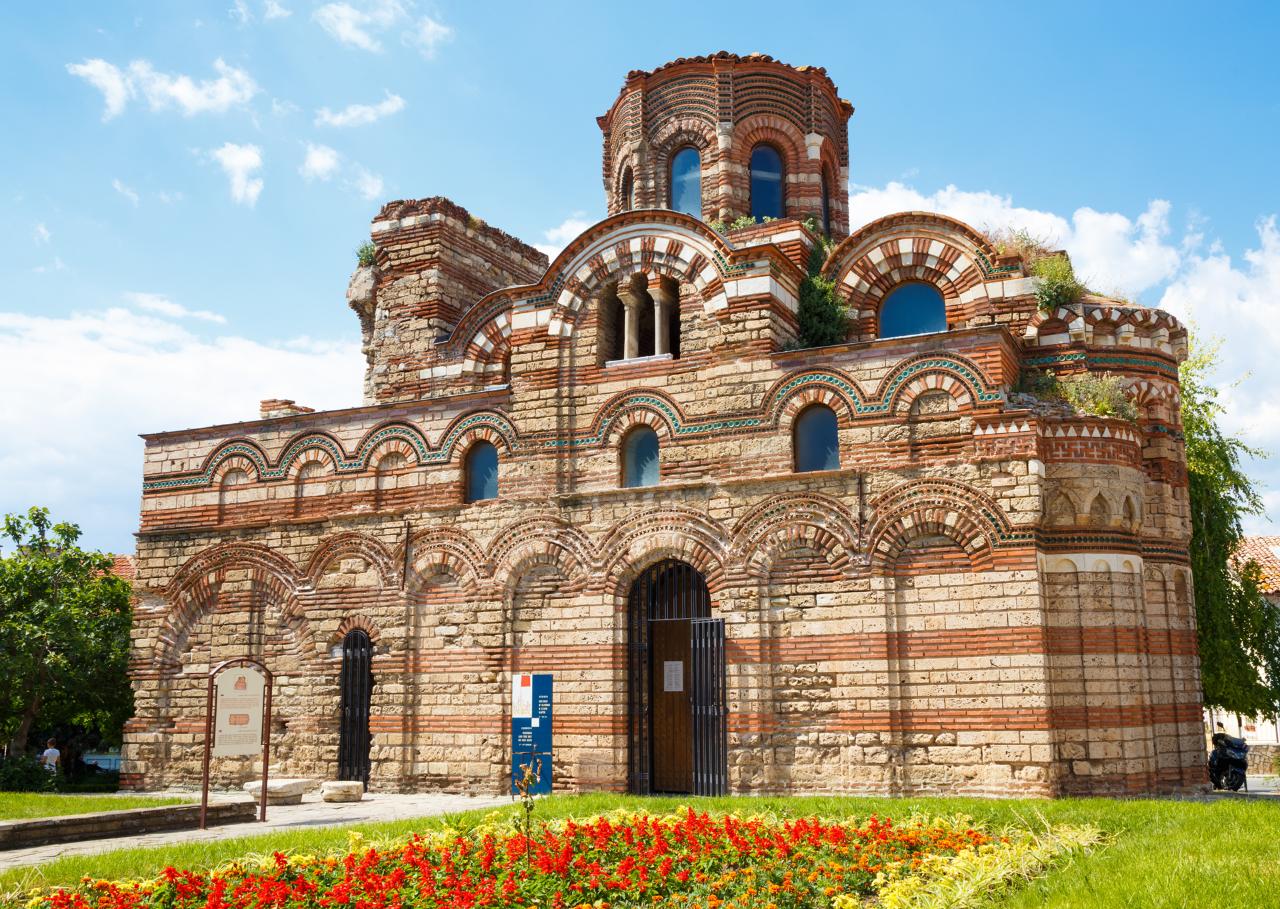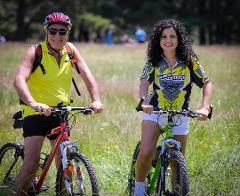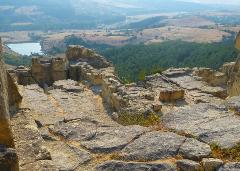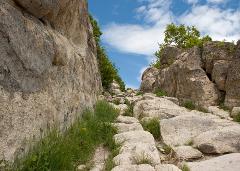Round-Trip to Bulgaria’s Top Attractions from Sofia to the Black Sea

- Duration: 7 Days (approx.)
- Location: Sofia
- Product code: ROUNDBG
About
A week-long round-trip that takes you to some of Bulgaria’s most visited cities and 3 of its UNESCO World Heritage Sites – the Kazanlak Tomb, Nesebar’s Old Town and Rila Monastery. From its capital, Sofia, to Plovdiv – 2019 European Capital of Culture and home to centuries-old landmarks, the oldest of which date back to Thracian times, and its nearby Bachkovo Monastery – the second largest monastery in Bulgaria. We’ll go north from there to Kazanlak in Bulgaria’s Rose Valley. Eastward we’ll travel to Nesebar on the Black Sea coast, and from there – to the seaside capital of Bulgaria, Varna. We’ll travel back west to the city of Veliko Tarnovo, former capital of Bulgaria and a major cultural center, then back to Sofia. We’ll complete our round trip in Bulgaria with a visit to Rila Monastery.
Highlights
• Go sightseeing in Plovdiv – 2019 European Capital of Culture and home to the Old Plovdiv, Ancient Theatre of Philippopol, the Kapana district and so much more
• Visit Bachkovo Monastery – the second largest monastery in Bulgaria
• See the Kazanlak Tomb in the Valley of the Roses – a UNESCO World Heritage Site
• Travel to Nessebar’s Old Town – also a UNESCO World Heritage Site
• Tour Varna and its sights – the Seaside Garden, “Assumption of the Holy Mother of God” Cathedral, Aladzha Monastery
• Explore the city of Veliko Tarnovo and visit sites such as the medieval stronghold of Tsarevets
• Visit Rila Monastery – another UNESCO World Heritage Site
• Go sightseeing in Sofia and stop by the St. Alexander Nevski Cathedral
• That’s three of Bulgaria’s UNESCO World Heritage Sites in one trip!
Description
Day 1
We begin the round-trip with a transfer from Sofia Airport to Plovdiv – one of the oldest European cities and second biggest in the country. After getting settled into the hotel, you’ll get the afternoon to yourselves so you can relax after your flight. We’ll meet up for dinner at a traditional Bulgarian restaurant. Overnight at a comfortable hotel in Plovdiv.
Day 2
We’ll start the day with a trip to Bachkovo Monastery, only half an hour away from Plovdiv.
The “Assumption of Holy Virgin” Bachkovo monastery is the second largest in Bulgaria. The cobbled road leading up to the monastery is lined with market stalls selling trinkets, folk craft, homemade jam, honey and spices. Bachkovo Monastery was founded all the way back in the 11th century. In the cathedral, there is an icon from 1311 known as the Miracle Working Icon of the Holy Virgin. It is believed that the icon has miraculous powers.
The area around the monastery has several traditional Bulgarian restaurants where we can sit down for lunch and get a taste of the local cuisine.
After we get back, we’ll go sightseeing in Plovdiv. We’ll start with a visit to the Old Town – a historical and architectural reserve known for its buildings in the style of the Bulgarian Revival Period, ancient Roman and Thracian ruins, various monuments and landmarks, all perfectly illustrating the complicated history that has shaped this city into the Plovdiv of today. We’ll visit its most famous and noteworthy landmarks, including the Balabanov and Hindliyan Houses, the Plovdiv Regional Ethnographic Museum, and, of course, the crown jewel of this city – the Ancient Roman Theatre.
After the Old Town, we’ll go down to the Main Shopping Street to see the ancient Roman Stadium and its uncovered northern part, which is open to visitors.
Next is Kapana (i.e. “the Trap”) – Plovdiv’s famed art corner, made up of a labyrinth of intertwining streets lined with modern art stores, stylish little cafes, building walls colorfully painted by talented street artists and constantly changing pieces of modern art scattered around every corner.
Day 3
In the morning, after breakfast we head for the town of Kazanlak – a place where the Valley of the Roses and the Valley of the Thracian Kings overlap.
What is known as the “Valley of the Thracian Kings” is where the rulers of the ancient Thracian tribes were buried with their horses, items and treasures. The Kazanlak Tomb (circa 4th-3rd century BC) is one of the most significant monuments of Thracian culture in the country, included in UNESCO’s list of global cultural inheritance. This tomb is known for the remarkable wall paintings covering the walls of the corridor and the dome ceiling.
The “Rose Museum” exposition introduces the rich history of Bulgaria’s rose oil production. It contains over 15,000 exhibits pertaining to rose oil.
From there, we’ll be transported to the Black Sea coast, specifically Nessebar (also spelled Nesebar). With a history of over 3200 years, it is one of the most ancient settlements in Europe.
The bulk of Nessebar’s attractions is in its Old Town, the entirety of which is a registered UNESCO World Heritage Site. The Old Town is on a small peninsula that was once the location of the ancient Thracian settlement Mesambria Pontica.
The Old Nessebar is an architectural reserve made up of houses in the Bulgarian Revival Period style with a unique Nessebar regional twist to it. It has 13 historical and active churches, the oldest of which – the Hagia Sophia Church dates back to the 4th century AD.
We’ll spend the night at a hotel in Sunny Beach.
Day 4
First thing in the morning after breakfast, we head for Varna – the maritime capital of Bulgaria and third largest city in the country.
Its Seaside Garden is the largest in Varna and follows the Black Sea coastline. It is one of only 3 man-made natural reserves in Bulgaria, home to rare and endangered plant species. It is said that if one walks backwards over the bridge at the entrance of the main garden alley with their eyes closed and make a wish, that wish will come true. On its northern side is the Varna Dolphinarium, and on the southern side – the Varna Aquarium. The Varna Zoo and the Planetarium are also located within the garden’s bounds.
Located in the heart of Varna, the “Assumption of the Holy Mother of God” Cathedral is the largest Christian temple in Varna, and the second tallest in the country after Sofia’s St. Alexander Nevski. Its impressive size and external and internal architectural style make it one of Varna’s top attractions.
Among its many fascinating exhibits, the Varna Archeological Museum houses the oldest gold treasure in the world. Discovered in the Varna Necropolis, the jewelry dates back to 4600 BC.
Varna is home to the ruins of the largest Roman bath-house in the Balkans. The Roman Thermae date back to the 2nd century AD, and were once 20 meters tall, and the full structure used to cover an area of 7000 square meters.
Aladzha Monastery is a Medieval Orthodox Christian cave-monastery. It dates back to the 12th century, but was abandoned in the 16th century. The cambers, doorways and stairs are carved right into the rock.
We’ll next take you to Veliko Tarnovo, former capital of Bulgaria. We’ll be spending the night at a hotel in Veliko Tarnovo.
Day 5
Located in Stara Planina mountain, built upon its steep slopes, with a beautiful river winding through the heart of the city, Veliko Tarnovo is a picturesque settlement with a rich history commemorated in the many historical and cultural landmarks strewn across its territory.
Veliko Tarnovo’s most popular tourist attraction is the medieval stronghold of Tsarevets. Built high atop a hill, it towers over the city and offers a beautiful view of the area from up high. It served as the Second Bulgarian Empire’s primary fortress from 1185 to 1393, comprising the royal and patriarchal palaces.
The Holy Forty Martyrs Church is a medieval church built during the reign of Tsar Ivan Asen II in the 1230’s. It has been restored, its collapsed parts rebuilt, and it is now open to the public.
In the Museum of the Bulgarian Revival and Constituent Assembly visitors can trace the development of Christian art from the end of the 14th century to the end of the 19th century in a collection of works by master wood-carvers. The Revival Period exhibition is dedicated to Veliko Tarnovo in the 18th and 19th centuries, showcasing examples of the traditional crafts practiced in this city at the time.
The Samovodska Charshia is the old market in Veliko Tarnovo. In the early 19th century, when the town was rapidly developing emerged a market centre with numerous workshops, bakeries and cafes. Today, the workshops on this street preserve the spirit and the original atmosphere of the Revival Period.
We can have lunch at one of Veliko Tarnovo’s traditional Bulgarian restaurants, after which we’ll set off towards Sofia.
On the way to Sofia, we’ll make a small detour to Prohodna Cave, famous for the Eyes of God natural phenomenon – two large openings in the ceiling of the cave, of nearly the same size and almond-shaped and strongly resembling human eyes. During certain parts of the day, sunlight streams through the openings in two large rays, and at night, one can look through them towards the night sky.
From there, we’ll continue our trip to our hotel in Sofia.
Day 6
We’ll start the day with a trip to Rila Monastery – the biggest monastery in Bulgaria and one of the country’s most emblematic cultural landmarks. It is the most influential spiritual centre in the country and the second biggest monastery on the Balkan Peninsula. It was founded in the 10th century by the monk-hermit John of Rila, who was later named patron saint of Bulgaria. Rila Monastery is one of Bulgaria’s UNESCO World Heritage Sites.
In the afternoon, we’ll go on a sightseeing tour of Sofia’s top attractions. Its busy streets, the beautiful Baroque architecture in the Center and the park possess a lively charm that leaves you eager to explore, but the monuments and landmarks it is most famous for deserve our full attention.
The Saint Alexander Nevsky Cathedral is one of the largest Orthodox Christian cathedrals in the world and the second largest on the Balkan peninsula. Its impressive size and intricate design mark it as one of the most stunning architectural marvels in Bulgaria and Sofia’s most recognizable landmark.
The Saint Sophia Basilica is a red-brick church is stands atop the foundations of a sacred temple built in Roman times. The city of Sofia is named after this basilica.
The Church of St. George, built by the Romans is in the 4th century, is an early Christian red brick rotunda that is considered the oldest building in Sofia.
The Church of St. Nicholas the Miracle-Worker is a beautiful golden-domed church designed in the Russian Revival Style. Visually, it is unlike any other Orthodox church in Bulgaria. It is believed to be able to grant wishes.
The Ivan Vazov National Theatre is an example of neoclassical architecture is so spectacular that you will want to carry the memory home with you.
Overnight in Sofia.
Day 7
Departure from Sofia Airport.
The price includes
• The services of a professional English-speaking tour guide
• Accommodation in comfortable 3 and 4-star hotels in double rooms
• Half board treatment from the first day's dinner to the last breakfast
• Transfers during the tour
The price does not include
• The trip to / from Bulgaria
• Alcoholic beverages
• Entrance fees
• Single room: +10 €
Notes
This tour is for groups of at least 6.
Prices for smaller groups may vary – contact us for details.




